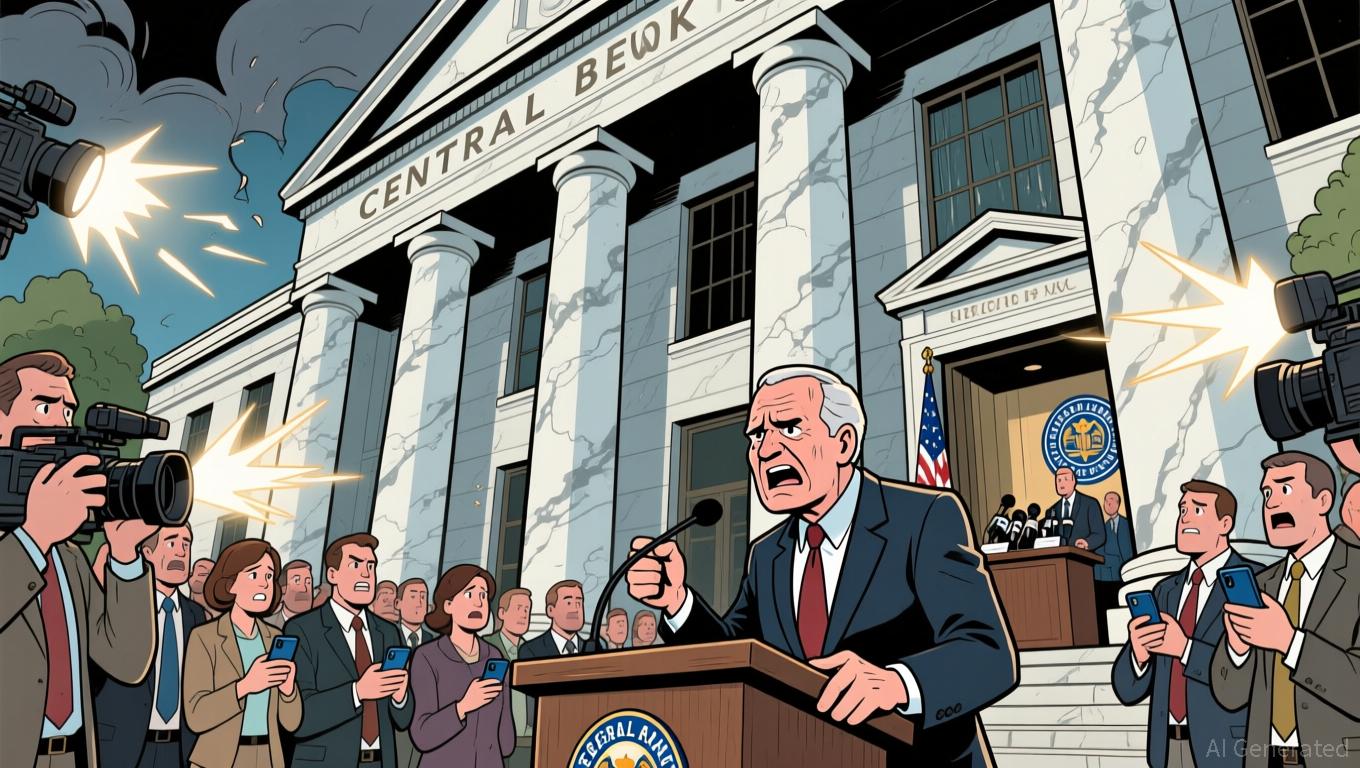Fed Faces Rate Cut Uncertainty: Balancing Dovish Momentum and Prudent Restraint Amid Data Delays
- Fed Governor Waller advocates 25-basis-point rate cut in December, citing weak labor market and low inflation. - Market expectations for a cut dropped to 42.9% as of Nov 17, reflecting growing skepticism amid delayed key data. - Dovish Waller faces internal Fed caution over inflation risks (3% annual rate) despite his emphasis on labor market deterioration. - White House adviser Hassett highlights AI's potential to reduce hiring needs, complicating Fed's balancing act between weak employment and economic
Federal Reserve Governor Christopher Waller reaffirmed his backing for a 25-basis-point reduction in interest rates at the central bank’s December gathering, pointing to a softening job market and muted inflation. Speaking in London, Waller—considered a leading candidate for the next Fed chair—stated that employment growth is “almost at a standstill” and that tight monetary policy is having a greater negative effect on lower- and middle-income groups
The Fed’s upcoming decision will rely on a mix of delayed economic data, such as the September jobs report, which is now set for release on Thursday after a 43-day government shutdown caused a postponement. Waller pointed out that

The lack of crucial economic data adds to the uncertainty. The postponed September employment figures and other delayed reports will be key factors in the Fed’s final call at its December 9–10 meeting. Waller, however, remains steadfast,
Wider financial markets also mirror this uncertainty. The New Zealand Dollar (NZD) strengthened after U.S. President Donald Trump lifted tariffs on $1.25 billion worth of New Zealand goods, but expectations of a rate cut from the Reserve Bank of New Zealand this month capped its gains
As the Federal Reserve navigates these complicated circumstances, the next few weeks will challenge its ability to interpret conflicting signals. With Waller’s dovish approach and Hassett’s guarded optimism, the outlook remains unclear, but it is evident that the fragile labor market and delayed data will be central to the Fed’s upcoming discussions.
Disclaimer: The content of this article solely reflects the author's opinion and does not represent the platform in any capacity. This article is not intended to serve as a reference for making investment decisions.
You may also like
Fed's Split Opinions and Incomplete Data Obscure Prospects for Rate Reduction
- Fed's December rate cut odds drop to 39.6% due to missing October jobs data and inflation uncertainty. - Market jitters rise as gold falls, dollar strengthens, and crypto faces pressure amid policy uncertainty. - Fed factions debate inflation control vs labor support, with CME pricing 44% chance of 25-basis-point cut. - Central bank plans to end quantitative tightening in December, but data gaps complicate policy calibration. - 2026 may see slower easing cycle as investors monitor November payrolls and F

$40K Gas Fee Turns Into $1M Gain: Jesse Token Sniping Highlights Barriers to Entry in Crypto
- An address paid $40K in gas fees to secure 7.6% of Jesse token, netting $1M profit after selling its stake. - The "scientist" actor exploited advanced tools to front-run Jesse's token sale, highlighting DeFi's competitive "sniping" dynamics. - High gas fees and technical barriers concentrate token sale opportunities among well-resourced participants, raising accessibility concerns. - Jesse token's launch, led by Base co-founder, reflects broader crypto trends where strategic timing and resources drive sp

Bitcoin's Latest Price Fluctuations and Growing Institutional Interest: Optimal Timing for Investment as Regulations Become Clearer and Economic Conditions Evolve
- Bitcoin's 2025 volatility reflects institutionalization, with $11B in Q3-Q4 2025 ETF inflows and corporate buyers like MicroStrategy accumulating BTC. - Regulatory clarity via the GENIUS Act and Tether's Latin American expansion accelerated institutional adoption, despite U.S. state-level restrictions creating short-term uncertainty. - Macroeconomic tailwinds including Fed rate cuts and $96T global M2 money supply supported Bitcoin's $200,000 price target, lowering capital costs for long-term holdings. -
Solana’s Latest Price Rally: Could This Signal the Beginning of Another Bull Market?
- Solana's 2025 upgrades (Firedancer, Alpenglow, ZK Compression v2) enhance scalability to 1M TPS and reduce costs by 5,200x, positioning it for institutional adoption. - Institutional partnerships with Western Union (USDPT), Google Cloud, and ETFs (BSOL/GSOL) drive $111M inflows and validate Solana as a financial infrastructure backbone. - While SOL trades at $141 under bearish pressure, technical upgrades and real-world use cases suggest long-term growth potential beyond speculative trading cycles.